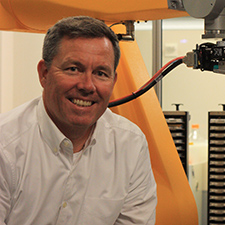
December 11, 2023
The SLAS Journals recently added something new to its article submission format: the protocol article. Different from reviews, perspectives, original research and technical briefs, the protocol article presents detailed research methods that have been previously used and published in peer-reviewed journals for the sake of allowing others to try out a method, assay or technology to advance scientific discovery.

“There are plenty of other journals that publish protocols, but they're not in the same space as SLAS Discovery and SLAS Technology,” comments SLAS Protocols Editor Adam Zweifach, Ph.D., professor, molecular and cell biology, cell and developmental biology at University of Connecticut, (Storrs, CT, USA). “The SLAS journals have a unique focus on drug discovery, assay development and the screening and technologies related to those processes that I don't think you're likely to encounter in other protocols journals.”
The SLAS journals introduced the format in 2022, shortly after the publications converted to full open-access publishing. The editorial boards discussed the additional format well ahead of its introduction and felt confident about its success — particularly in the era of Open Science Principles.
"Protocols are one of the tools that can be used to support reproducibility, promote trust in science and reduce redundancy in scientific exploration,” says Lydia Briggs, senior publisher, Applied Biochemistry Journals at Elsevier, publisher of the SLAS journals.

“Practically speaking, when followed in the lab, published protocols are useful when you come to publish that research as you don’t need to go into minute detail in the methodology section,” Briggs continues. “You can summarize what was done and add a link to the full protocol so readers may reproduce your experiment or know what to try or change when building their own methodology for a similar experiment. The beauty of publishing a protocol in SLAS Discovery or SLAS Technology is that they are open access — the articles will be free to read in perpetuity and can be shared with others according to the Creative Commons license added to the protocol by the author at the time of publishing.”
Zweifach comments that readers should look to these articles for direct relevance to the work they're doing, and that for authors, the article type expands publishing opportunities at many different experience levels.
“For students and postdocs, this is a great chance to take information they've generated as they develop protocols in their lab and turn that into a peer-reviewed publication that they can put on their CV,” Zweifach explains. “Otherwise, that data might sit in a notebook or in a thesis appendix and not be published, missing the opportunity to spark collaborations with others in the research community.”
He encourages students to draw from thesis research that they've worked hard to develop. “They might have a chapter in their thesis devoted to validating an assay or a process they've developed that by itself would not be published along with their primary publication,” Zweifach continues. “This allows the student to receive wider recognition for the different elements of their research, and the method gets put out there in much more detail than you can publish in a regular research article just due to the space limitations.”
He also views the protocol article as an opportunity for vendors in the community to repurpose internal documents and turn them into peer-reviewed articles that place processes and products before a wider audience.
“When I've talked to people from industry, many of them have application notes or other articles that they have available to customers that they could use as the basis of a protocol article for the SLAS journals. This kind of work gives them visibility and showcases what they can do for the SLAS readership,” Zweifach says.

A recent article published in the October issue of SLAS Technology from a research team at Agilent, for example, explores methods for the purity assessment of IVT mRNAs through either 6,000 or 9,000 nt and determination of poly(A) tail length using different capillary gel electrophoresis methods.
“We were contacted by SLAS after presenting a poster at SLAS2023 and thought it was a great opportunity to provide more context, best practices and troubleshooting tips for IVT mRNA analysis,” comments Kyle D. Luttgeharm, Ph.D., product manager, Parallel CE Instruments, Diagnostics and Genomics Group and Biomolecular Systems and Solutions at Agilent Technologies (Santa Clara, CA, USA).
“The protocol format allowed us to quickly take our poster and convert it to step-by-step instructions for IVT mRNA purity assessment and polyA tail length analysis in a single peer-reviewed document,” he continues. “The entire publishing experience was quick with excellent comments from the reviewers that improved the quality of the final protocol.”
A Special Issue Devoted to Launching the Protocols Format
In March, SLAS Discovery launched a special issue dedicated to the new format. Zweifach, joined by Guest Editors Mariafrancesca Scalise, Ph.D., and Marc Bickle, Ph.D., worked with the authors to produce the first set of protocol articles.
“Our hope with the special issue is to encourage authors to step out and submit protocol articles to both SLAS Discovery and SLAS Technology. The new format will be a bonus to SLAS journals and is not limited to special issues,” Zweifach says.
The March issue contained six protocol articles that covered a wide range of topics of interest and communicated specific scientific methods, rather than focusing on an assay technology, disease area or molecular target.

In this issue, Timothy Spicer, Ph.D., and colleagues from The Herbert Wertheim UF Scripps Institute for Biomedical Innovation & Technology, (Jupiter, FL, USA), provide a protocol for testing natural products in NSCLC cell lines grown as spheroids. The team demonstrates the methods needed for automated 3D screening using microbial natural products (NPs), exemplified by crude extracts, partially purified fractions and pure NPs, which may lead to future use targeting human cancer.
“SLAS Discovery is the perfect place for the protocol submission our team wrote,” comments Spicer. “It hits all the marks for us and reaches the right crowds. The submission process was something new in terms of how to format the article, but the directions were very clear.” His team plans to submit another protocol article in the near future.

In another contribution to the issue from AstraZeneca, (Cambridge, UK), Niamh Mullooly, Ph.D., and coauthors describe how to isolate primary pancreatic islets and conduct high-content imaging assays with them. The protocol specifically focuses on the multiparametric assessment of beta cell proliferation in mouse and rat ex vivo islets and provides the methodology required for the collection of high-quality cellular material. The high-throughput, plate-based assay can additionally be adapted to evaluate and quantify other disease relevant endpoints by high-content microscopy and be applied to other downstream measurements.
Co-author Davide Gianni, Ph.D., joined SLAS Discovery Author Insights Podcast Editor Rob Howes, Ph.D., to discuss the work, calling the protocols format, “critical in the scientific method in order to push the science and identify the whole therapeutic opportunity for human disease,” Gianni comments. “The protocol paper will allow other people to reproduce what's been done in a more thorough way. The lack of reproducible assays is a clear gap in the field.”
Other articles in the special issue, include:
- Neil Carragher, Ph.D., and colleagues from the University of Edinburgh (Edinburgh, Scotland, UK), who contribute a protocol for using a cellular ubiquitination reporter in high-content imaging analysis of patient-derived cancer cells grown in 3-D culture.
- Anna Dickson, Ph.D., et al. from AstraZeneca, (Cambridge, UK), describe how to implement high-throughput CRISPR-mediated gene silencing in primary lung epithelial cells and offer suggestions as to how the method could be adapted to other primary cell types. In this protocol, the team establishes a robust, scalable and automated arrayed CRISPR nuclease (CRISPRn) screening workflow for SAECs which can be combined with myriad disease-specific endpoint assays.
- Michaela Feodoroff, Ph.D., et al. from the University of Helsinki, (Helsinki, Finland), provide step-by-step instructions for conducting 3-D drug-sensitivity and resistance testing (3D-DSRT) in patient-derived cancer cells using readouts based on either luminescence or imaging. The group reports that 3D-DSRT can be performed within a one-to-three-week timeframe of the clinical sampling of cancer tissue, depending on the amount of the obtained tissue, growth rate of cancer cells and the number of drugs being tested, and that the method can be carried out with or without supporting matrices with U-bottom 384-well plates when appropriate for the patient-derived cancer cells or other cell models used.
- Finally, Apostolos Papandreou, M.D., Ph.D., et al. of University College London MRC Laboratory for Molecular Cell Biology, (London, UK), use the protocol format to detail the steps involved in differentiating IPSCs into dopaminergic progenitor cells and conducting an LC-3 based assay using high-content imaging. The team describe the automated seeding of day 11 ventral midbrain progenitor cells into 96-well plates, administration of compounds, automated staining for immunofluorescence, the acquisition of images on a high-content screening platform and workflows for image analysis.
In his editorial for the SLAS Discovery special issue Zweifach noted: “Because protocols are so different in scope than regular research articles, the guest editors of this special issue worked together to craft a specific set of instructions for protocols’ authors, and then worked with the authors who contributed submissions for the special issue to make sure those instructions could actually be translated into appropriate submissions.”
Sidelines
Read More Protocols in the Special Issue of SLAS Discovery
Listen in! An SLAS Discovery Author Insights Podcast on the New Protocols Format
